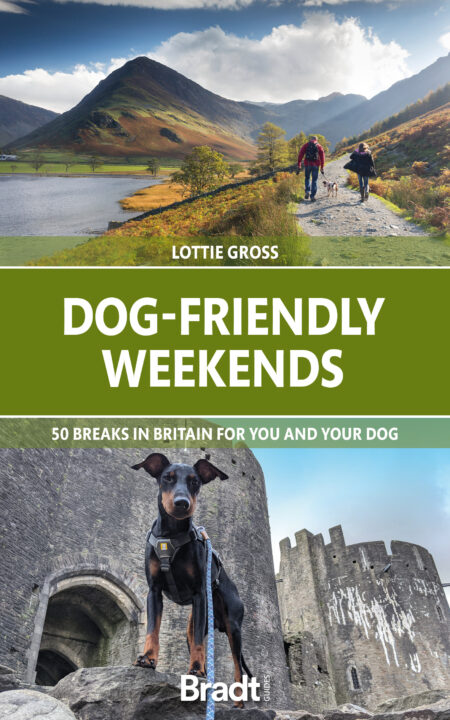It’s no secret that dogs love open spaces, and there’s no better place to let your pet run wild than on a beach. From the golden sands of Anglesey to the picturesque coast of Mull, this selection of the best dog-friendly beaches in Britain is guaranteed to keep you and your four-legged friend happy.
Anglesey, Wales
Hands down, Anglesey – a flattish island perched on the cusp of the northwest Welsh coastline, measuring just 45km by 33km – is one of the best spots for a dog-friendly beach weekend. While it hasn’t got particularly dramatic scenery of its own, from its fringes you can gaze back to the mainland to see some of the country’s finest natural terrain.
Standing on the sands of Llanddwyn Beach, for example, you’ll get glorious views of the stunning Llyn Peninsula to the south. From the lawns of the Plas Newydd country estate, look eastwards and on a clear day the mighty mountains of Snowdonia puncture blue skies. And on the western tip of Anglesey you can head out across Holyhead Island to see South Stack lighthouse – one of the greatest sunset-watching spots in Britain.
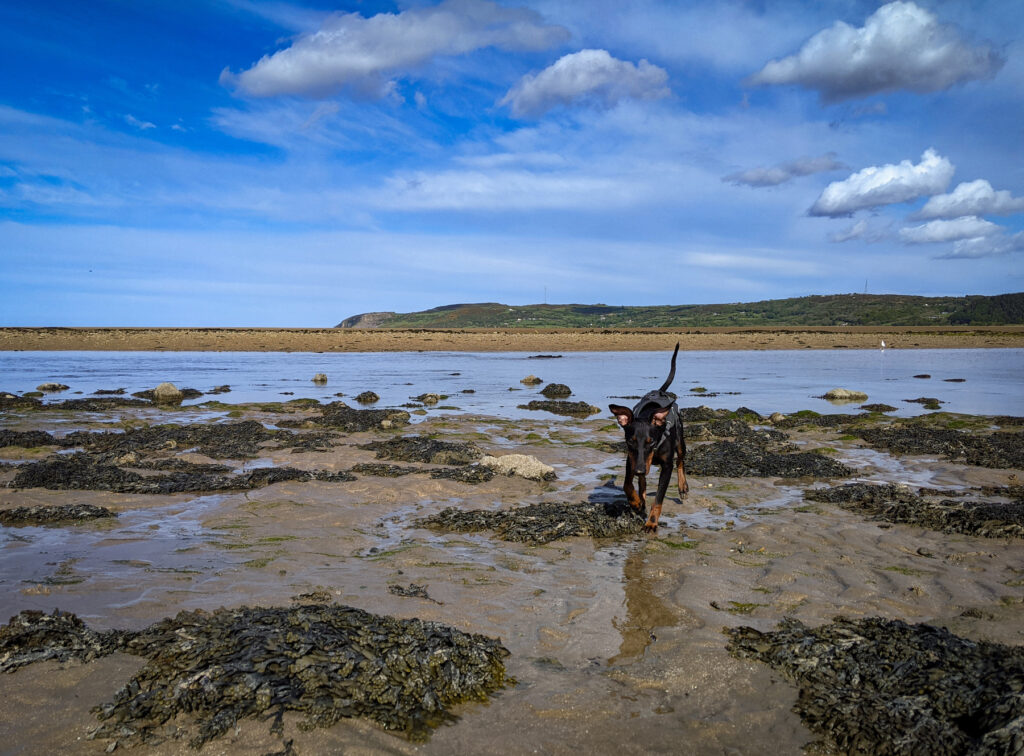
There’s plenty to love about Anglesey itself, too. Its main town, Beaumaris, in the east, is a charming little place to spend a day or two pottering in shops and watching boats go by from the pier; around 35km to the west, Rhosneigr is a well-heeled base for beach breaks and brilliant seafood, including some piquant oysters pulled right from the Menai Strait. You could spend a week on the island enjoying its dog-friendly beaches and great walking territory, but it’s perfectly possible to cherry-pick a handful of sights to see over a weekend.
Head to Llydan Beach, south of Rhosneigr and a touch smaller than the town’s northern beach, Llydan is usually a little quieter than most in Anglesey and thus perfect for games of fetch or paddles with the dog. Next, soak up the sea air on a Puffin Island boat trip (where canines of all size are welcome on board) before finishing your day with some of the finest seafood the area has to offer at The Oyster Catcher.
Isles of Scilly, Cornwall
The Isles of Scilly are Britain’s little bit of paradise. Much is said about the microclimate here – these low-lying islands, 55km off the Cornish coast, enjoy warmer, more reliable weather than the rest of the nation thanks to their location on the Gulf Stream – but they’re spectacular in any conditions. As long as you’ve got waterproofs and sunscreen, this enchanting archipelago is a crowd-please for dogs and owners alike.
There are five inhabited islands in the Scillies, none bigger than 15km² and each with its own appeal, and every one is incredibly welcoming for dogs. St Mary’s is the main isle; its airport, and a harbour for arrivals on the Scillonian III ferry, make it the entry point for most. Hugh Town, its ‘capital’, is a hive of activity with plenty of dog-friendly pubs and cafés, and neighbouring island Tresco is a popular place to head for tropical gardens and excellent walks. But the best way to experience these islands is to seek out remoteness – which is not difficult to find, even on a weekend break.
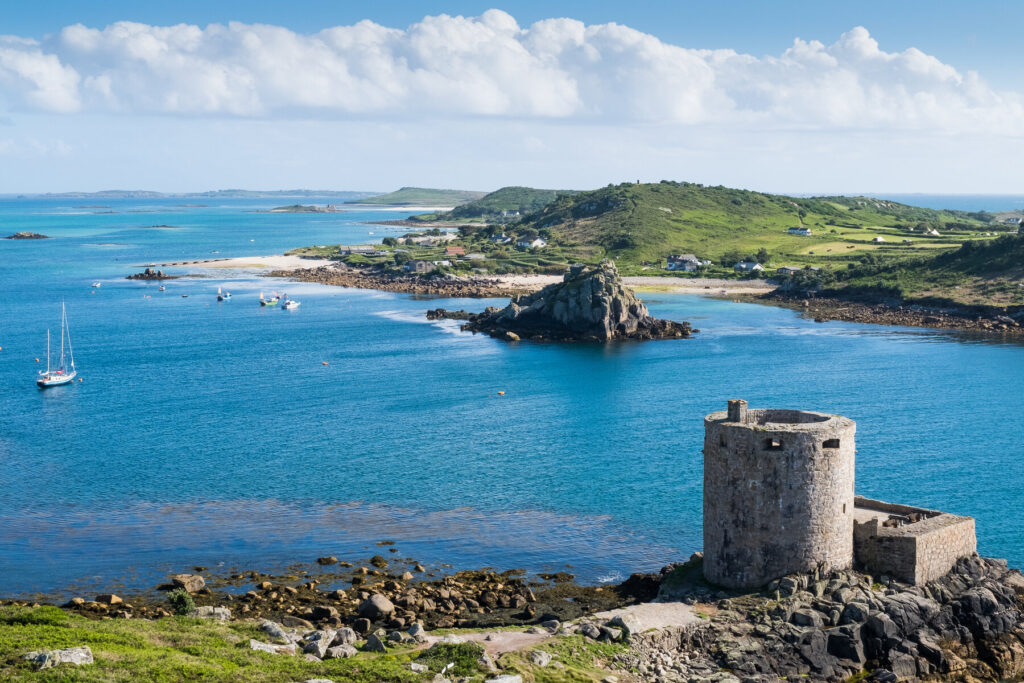
On St Martin’s, even in the height of summer, you could find you’re the only people on the white-sand beach by the quay. There’s very little to do here beyond eat, walk, sleep and gaze at the astonishingly blue sea with a glass of wine from the local vineyard. Bryher, the smallest island, has excellent walking and swimming and seal-spotting opportunities from its many bays and beaches, while St Agnes is one of the wilder isles. The footpaths here skirt around rocky bays and across lush green pasture from the local Troytown Farm (don’t miss a taste of the Troytown ice cream, served throughout the archipelago).
Holkham, Norfolk
Norfolk is Britain’s ‘big sky country’ and nowhere is that more apparent than on the sands of Holkham Beach on the north Norfolk coast. Walk through the pine forest that backs the beach and a vast golden landscape spreads out before you as you and your dog step on to the sand.
This area is part of the hugely important Holkham National Nature Reserve, home to myriad seabirds, lugworms and cockles beneath the sand. It’s a spectacular place to walk the dog (on the lead from April through August, to protect the ground-nesting little terns) – especially at sunrise.
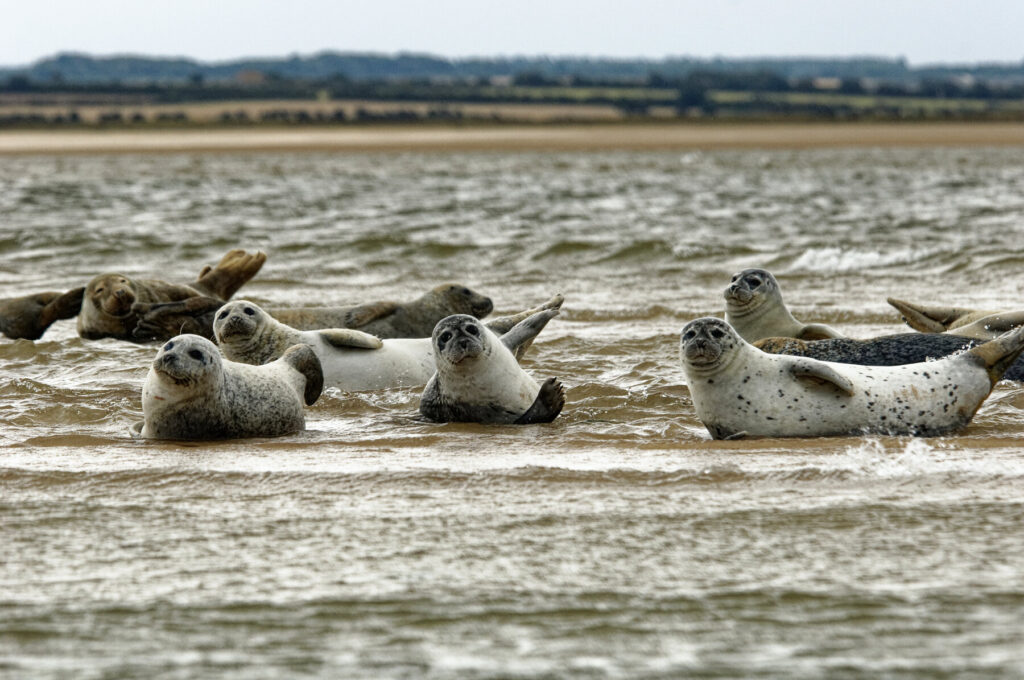
Walk east along the beach and after around 45 minutes you’ll come to Wells-next-the-Sea, a tiny but once important port and fishing village which in the 9th century saw the import and export of everything from grain and salt to wax and building materials. Today, it’s a cheerful resort town with ample seaside activities: go crabbing on the quay (buckets and line available from most of the seafront shops), take a dog-friendly harbour boat tour with Wells Harbour Tours, or simply take up residence in one of the colourful huts that preside over the sand at this end of the beach.
Isle of Mull, Scotland
Separated from the mainland by the almost 30km-long Sound of Mull, Mull is a wonderfully remote and wild island off the west coast of Scotland. It’s not huge – measuring around 40km from north to south – but the variety of landscapes is impressive, with linen-white sandy beaches lining its coastline and towering munros with rocky peaks rising up in its centre.
Tobermory, Mull’s capital, makes a great base for you and your dog. Sitting on the northeast tip of the island, it’s most famous for its starring role in children’s TV show Balamory, which used the colourful houses overlooking the ocean as a backdrop for its wholesome entertainment.
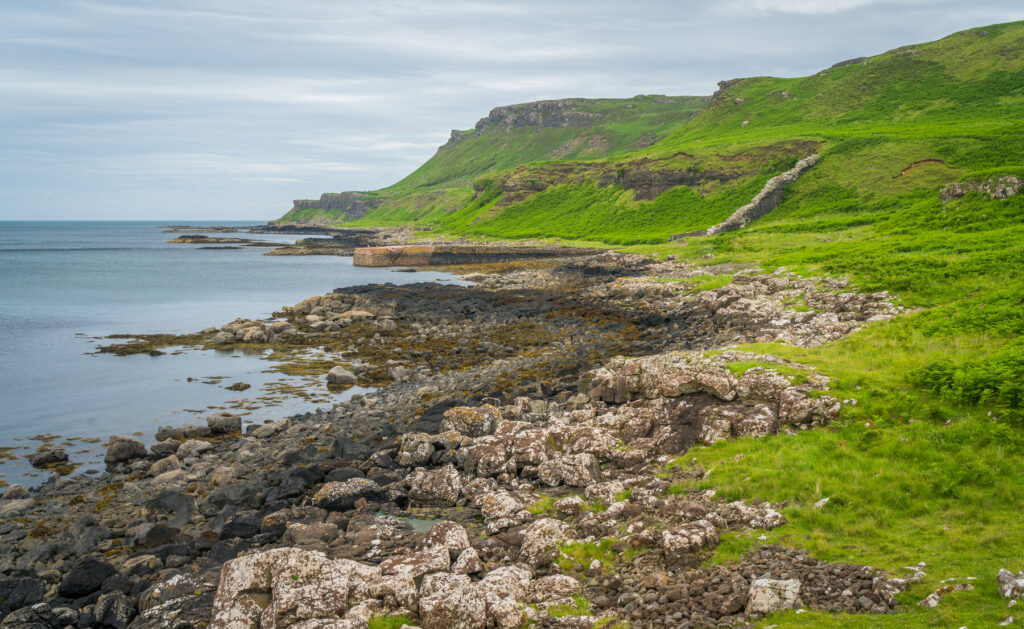
A working harbour town, Tobermory a bustling place with a couple of fun attractions, but the real highlight is the food and drink. Head to Tobermory Distillery for an evening tipple and the Isle of Mull Ice Cream kiosk for unusual and refreshing cones.
In the northwest of the island, around a 40-minute drive west of Tobermory, spectacular Calgary Bay, where a scythe of white sand separates grassy dunes from an astoundingly blue sea, is a gorgeous spot, and makes a great alternative base if you want beach time and plenty of open spaces for your pet to run free!
Bamburgh, North Northumberland
No matter from which angle you approach Bamburgh, its imposing castle really makes an impact. Arriving from the village of Seahouses to the south, you round the corner with the grassy dunes on your right and fields to your left, and it just appears from around the bend, regal and red, its crenellations and keeps lording over the sea beyond. There is no other word for it: it is simply magnificent.
The castle may dominate this tiny village on the Northumberland coast, but it’s not the only thing worth travelling here for. The beach that sits below Bamburgh’s fortress is an expansive swathe of soft yellow sand where dogs are allowed to run about and play in the surf year-round.
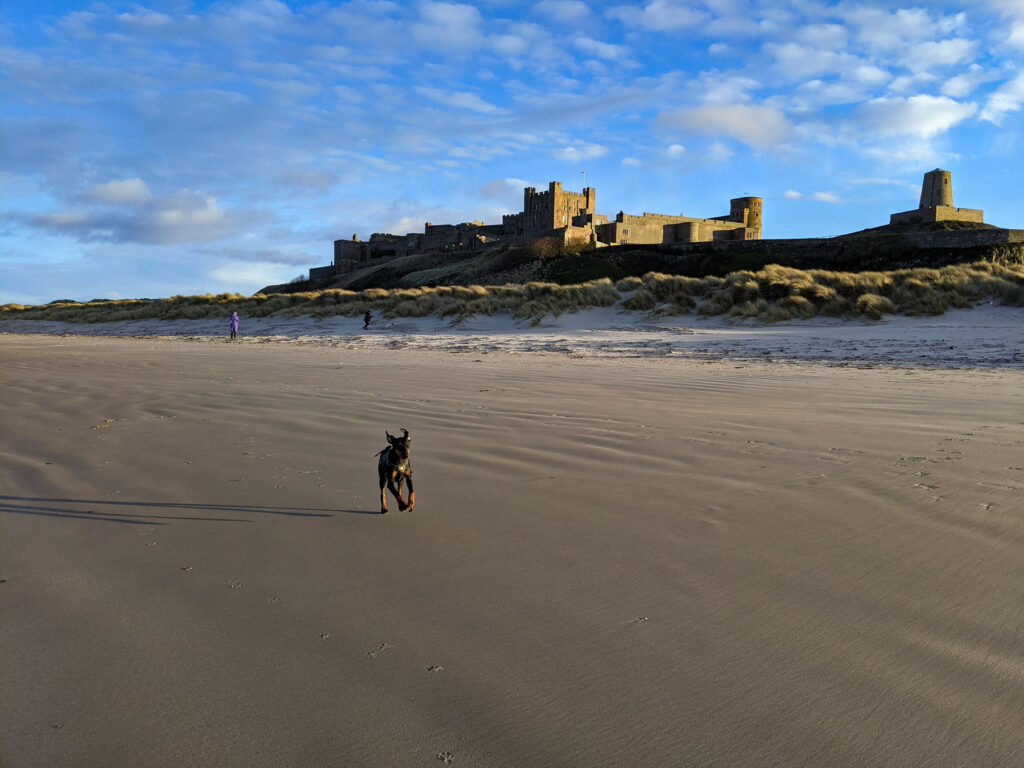
Head north from the castle and climb the sand dunes for spectacular views over Budle Bay, or head south and after 5km you’ll find yourself in Seahouses, where boats bob in the harbour and fish and chips at Neptune Fish Restaurant is a lunchtime essential. Cruises leave Seahouses Harbour for the Farne Islands, a remote collection of 20 or so rocky isles where seals, guillemots and puffins occupy the craggy cliffs and beaches.
More information
For more information, check out Lottie Gross’s guide:
